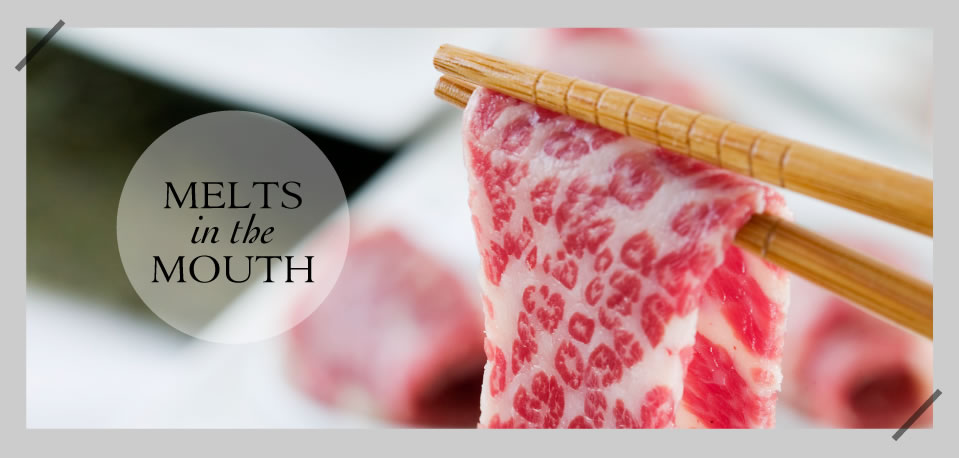WHAT IS MARBLING?
The marbling in Rangers Valley beef contributes to the delicious melt-in-the mouth texture and authentic beef flavour that makes for a great eating experience.
Composition of Marbled Beef
Visually, marbling is soft intramuscular (between the muscle fiber) fat made up of polyunsaturated, monounsaturated and
saturated fats. At chiller temperatures, marbled fat appears white and will become less obvious as the meat comes
up to room temperature with unsaturated fats beginning to melt.
Grading of Marbled Beef
In Australia marbled beef is graded by AUS-MEAT on a scale of 0 (no marbling) to 9 (extensive marbling). The animal
breed such as Angus or Wagyu, age of slaughter and diet (grain vs grass fed) all influence the level of marbling in
the animal. Different cuts of meat will also exhibit different levels of marbling, generally more at the neck and less
towards the hindquarter.
Marbling and Eating Quality
Extensive research has shown that the unique flavour and aroma compounds of beef are held in the fat, while lean meat
has a relatively consistent flavour across all species. Upon cooking, the fat melts and these compounds are released giving
a rich beef flavour and satisfying aroma.
These melting marble fats also contribute to the tender texture of cooked marbled beef, with the fats slowly basting the
meat from the inside as they warm up during cooking. This process aids even cooking without excessive heat and
improves the retention of water, enhancing a great juicy texture.
Marbling contributes to the texture and authentic beef flavour, creating an unforgettable dining experience.

